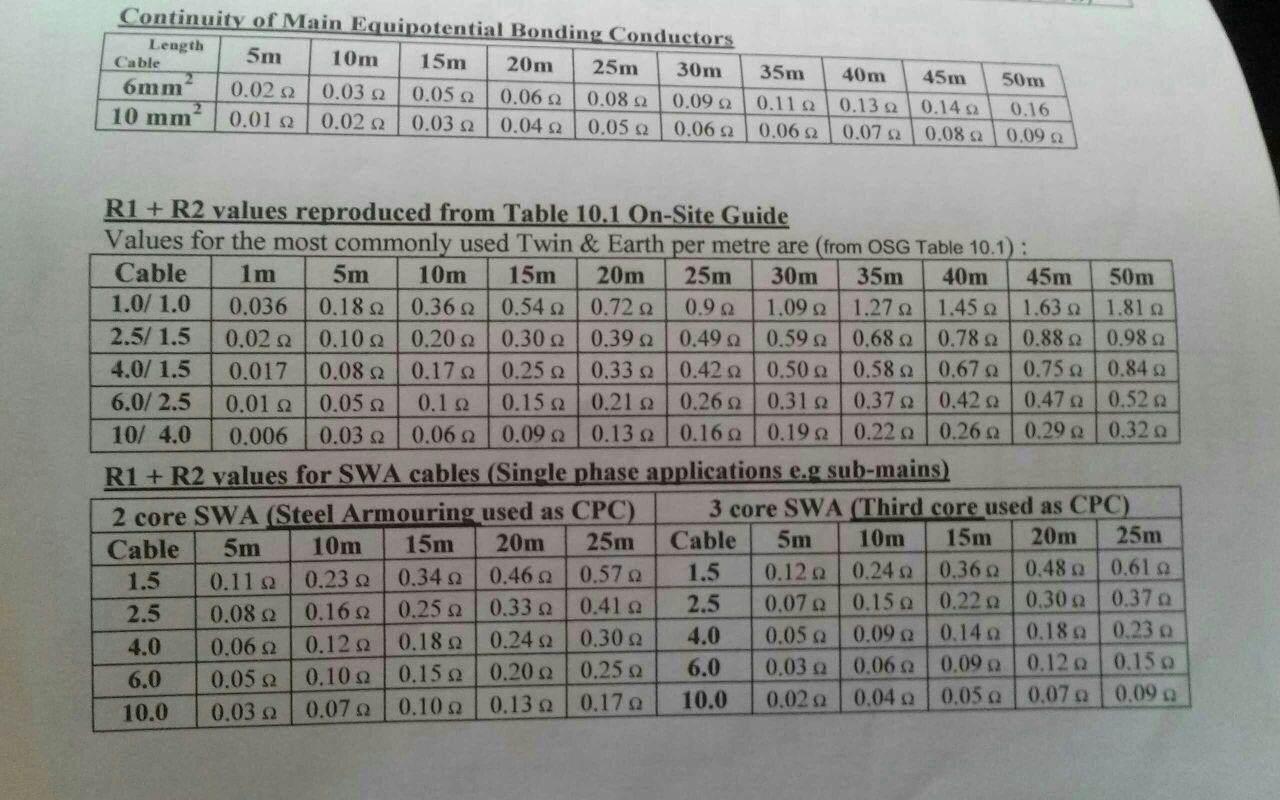The information is in BS 7671, it's just there in an oblique form.
It is in the voltage drop tables, in appendix 4. For example, 4D1B column 2 (singles) and 4D5 column 8 (T&E): same figures for voltage from (e.g. 1mm = 44mV/A/m, 1.5 = 29, 2.5= 18 etc).
This is voltage drop in mV/A/m.
From Ohm's Law: R = V/I... so you could write voltage drop as mΩ/m if you wanted. mΩ/m is also "resistance per metre"
The VD figures in BS 7671 are (like maximum Zs values) calculated at full operating temperature. From the "NOTE" in section 6.1 of appendix 4, it mentions an approximate resistance-temperature coefficient of 0.004 per degree C at 20C... this is explained under table B2 in GN3, "The correction factor is given by: {1 + 0.004 (ambient temp - 20C)}" Although here it's talking about ambient temperature, rather than operating temperature, you can see it's the same principle.
Thermoplastic is good upto 70C. 70-20 = 50C. 0.004x50 = 0.2. So the correction factor is 1.2.
If you apply the factor of 1.2 to table I1 in the OSG or B1 in GN3, you will get the voltage drop numbers in BS 7671. Or, if you wanted to go the other way, then divide the VD numbers in BS 7671 by 1.2... not forgetting of course that the VD numbers assume you have two conductors (L and N) of the same CSA.
Example. Say you wanted to know the expected measured (at 20C) R1+R2 of 2.5+1.5mm T&E, and you only had BS 7671 on you.
VD for 2.5mm = 18mV/A/m = 18mΩ/m, which includes the resistance of both L and N, so a single cable of the same length contributes half this.
VD for 1.5mm = 29mV/A/m = 29mΩ/m, which includes the resistance of both L and N, so a single cable of the same length contributes half this.
(18+29)/2 = 23.5 mΩ/m
Apply the 1.2 correction factor: 23.5 / 1.2 = 19.58mΩ/m.
Answer from the OSG: 19.51mΩ/m.
Ta da!










